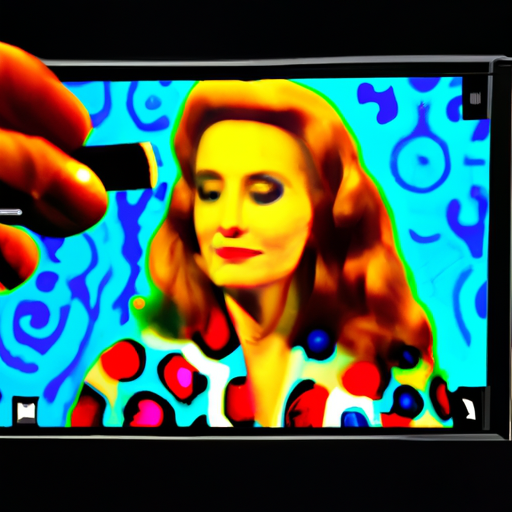-
Table of Contents
- Creating Stunning Album Artwork: Designing for Music
- The Power of Album Artwork
- Understanding the Target Audience
- Key Elements of Album Artwork
- Case Studies: Iconic Album Artwork
- The Dark Side of the Moon – Pink Floyd
- Abbey Road – The Beatles
- Nevermind – Nirvana
- Designing for the Digital Age
- Summary
Creating Stunning Album Artwork: Designing for Music
Album artwork plays a crucial role in the success of a music release. It serves as the visual representation of an artist’s music and can greatly impact the perception and reception of the album. In this article, we will explore the importance of album artwork and provide valuable insights on how to create stunning designs that resonate with the audience.
The Power of Album Artwork
Album artwork has the power to captivate and engage listeners even before they press play. It sets the tone for the music and creates a visual identity for the artist or band. A well-designed album cover can evoke emotions, spark curiosity, and leave a lasting impression on the audience.
Research has shown that album artwork significantly influences consumer behavior. According to a study conducted by the University of Miami, participants were more likely to purchase an album with visually appealing artwork compared to one with a plain or unattractive cover. The study also revealed that album covers with high artistic value were perceived as having higher musical quality.
Understanding the Target Audience
Before diving into the design process, it is essential to understand the target audience and the genre of music the album represents. Different genres have distinct visual aesthetics, and it is crucial to align the artwork with the expectations and preferences of the target audience.
For example, a heavy metal album would typically feature dark and intense imagery, while a pop album might have bright and vibrant colors. Understanding the genre and the target audience’s preferences will help in creating artwork that resonates with them and effectively communicates the essence of the music.
Key Elements of Album Artwork
When designing album artwork, several key elements should be considered to create a visually stunning and impactful design:
- Typography: The choice of fonts and how they are arranged can greatly influence the overall aesthetic of the artwork. It is important to select fonts that complement the genre and style of the music while ensuring readability.
- Imagery: The imagery used should be visually striking and relevant to the music. It can be a photograph, illustration, or a combination of both. The imagery should capture the essence of the album and evoke emotions in the viewer.
- Color Palette: Colors play a vital role in setting the mood and tone of the artwork. Different colors evoke different emotions, and it is important to choose a color palette that aligns with the music and the intended message.
- Composition: The arrangement of elements within the artwork should be visually balanced and pleasing to the eye. The composition should guide the viewer’s gaze and create a sense of harmony.
Case Studies: Iconic Album Artwork
Several albums throughout history have become iconic due to their visually stunning and memorable artwork. Let’s take a look at a few examples:
The Dark Side of the Moon – Pink Floyd
The album cover for Pink Floyd’s “The Dark Side of the Moon” is one of the most recognizable and iconic in music history. Designed by Storm Thorgerson and Aubrey Powell of Hipgnosis, the cover features a prism dispersing light into a spectrum of colors. The simple yet powerful design perfectly captures the album’s themes of light, darkness, and the human experience.
Abbey Road – The Beatles
The cover of The Beatles’ “Abbey Road” album has become an enduring image in popular culture. The photograph, taken by Iain Macmillan, shows the band members walking across a zebra crossing outside Abbey Road Studios. The simplicity of the image and the symbolism behind it have made it an iconic piece of album artwork.
Nevermind – Nirvana
The cover of Nirvana’s “Nevermind” album, featuring a baby swimming underwater, is another example of impactful album artwork. Designed by Robert Fisher, the cover art perfectly captures the rebellious and raw energy of the band’s music. The image has become synonymous with the grunge movement of the 1990s.
Designing for the Digital Age
In today’s digital age, album artwork is not limited to physical formats. With the rise of streaming platforms and digital downloads, album covers are often viewed on screens of various sizes. It is crucial to consider the digital context when designing album artwork.
Here are some important considerations for designing album artwork in the digital age:
- Thumbnail Visibility: Album covers are often displayed as small thumbnails on streaming platforms. It is important to ensure that the artwork remains visually appealing and recognizable even at a small size.
- Consistency Across Platforms: Album artwork should be consistent across different platforms to maintain brand identity and recognition. The dimensions and file formats may vary, so it is essential to create artwork that adapts well to different platforms.
- Interactive Elements: Digital album artwork can incorporate interactive elements such as animations or hidden details that enhance the user experience. These elements can create a deeper connection between the audience and the music.
Summary
Album artwork is a powerful tool for musicians to visually communicate their music and connect with their audience. By understanding the target audience, considering key elements of design, and adapting to the digital age, artists can create stunning album artwork that leaves a lasting impression.
Remember, album artwork is not just a visual accompaniment to the music; it is an integral part of the overall music experience. So, let your creativity flow and design album artwork that captivates, inspires, and resonates with the listeners.
